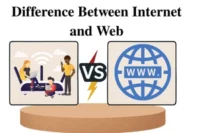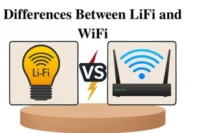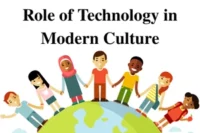7 Game-Changing Shopping Technology Trends You Need to Know in 2025
Published: 20 Aug 2025
Shopping is changing very fast. In 2025, shopping technology will make it easier, faster, and safer for everybody. You can now try on clothes using your phone, bypass the checkout queue, and receive product recommendations from an AI assistant.
This significant shift is occurring because consumers desire greater comfort and quickness. To stay up, stores are using new technologies such as artificial intelligence (AI), augmented reality (AR), and smart sensors. These technologies make it easy for shoppers to acquire what they want.
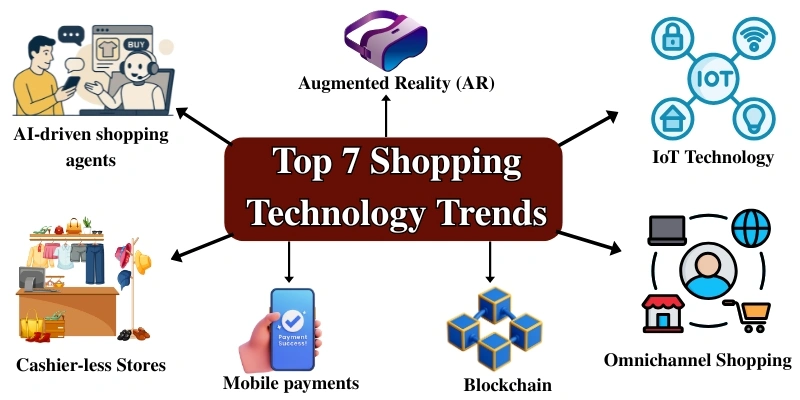
In this article, you’ll learn how shopping technology is changing the way we shop in 2025. We’ll examine key tech trends, including virtual testing and voice shopping. You’ll also see real-world examples from retailers like Amazon and IKEA. Whether you’re a shopper or a store owner, this guide will keep you one step ahead.
Let’s dive into innovative shopping technology trends!
Top 7 Shopping Technology Trends in 2025
In 2025, retail technology will be more innovative than ever. From browsing to paying, technology is making each process faster, simpler, and more personal. Let’s look at the top seven trends shaping the way we shop this year.
1. AI‑Driven Personalization & Shopping Agents
Retailers are utilizing AI to create more stylish and personalized shopping experiences. From tailored product suggestions to helpful chatbots, AI is becoming essential.
In 2025, AI-driven shopping agents will be able to handle purchases on behalf of users based on their choices and past behavior.
For Example: Sephora’s chatbot helps users find suitable skincare based on their needs. It’s fast, accurate and feels like a real assistant.
2. Augmented Reality (AR) & Virtual Try‑On
AR is helping shoppers visualize products in their lives before they make a purchase. From glasses to furniture, customers can now “try before they buy” using their phone.
Younger generations, particularly Generation Z, are pushing this trend of technology in online shopping. They demand visual and social interactions.
71% of shoppers say they would shop more often with stores that offer AR tools.
For Example: IKEA’s app allows you to visualize how furniture will look in your home. Warby Parker lets you try on glasses virtually.
3. IoT for Inventory Management & Smart Shelves
IoT technology connects store devices to the internet. Racks can tell when stock is low. Sensors track products in real-time.
Behind the scenes, IoT is making stores smarter. Shelves now track inventory in real-time, alerting staff when stock levels are low.
The use of retail technology in stores reduces out-of-stock issues and ensures operations run smoothly.
For Example: Amazon Go stores and Walmart use smart shelves to track product levels. This reduces out-of-stock items.
4. Cashier-less Stores & Smart Carts
Checkout waits are disappearing from view. Cashier-less businesses utilize sensors and artificial intelligence to enable shoppers to select products and walk out. You walk into a store, get what you need, and leave. There are no checkout queues. Smart carts scan things while you shop.
Smart carts, such as those found at the supermarket chain Kroger, scan items while you shop and handle checkout at the exact moment.
Real-life Example: Amazon Go stores utilize cameras and sensors, allowing you to shop without stopping at a register.
5. Omnichannel Shopping & POS Modernization
Omnichannel shopping implies that it works seamlessly across all platforms, including phones, laptops, and in-store. POS (Point of Sale) systems now support all channels.
Retailers are upgrading POS systems to connect apps, websites, and physical stores into one smooth experience.
According to some stats, Businesses with strong omnichannel strategies see 89% more customer retention.
Real-life Example: Nike links your online profile with in-store shopping for faster checkouts and personalized recommendations.
6. Contactless Payments & Mobile Commerce
Mobile payments are becoming popular. Customers look for quick, touchless purchases via phones, watches, or QR codes.
By 2025, more than 50% of all payments will be made via mobile devices.
Real-life Example: Apple Pay, Google Pay, and PayPal are used by millions for easy and secure payments.
7. Blockchain & Smart Lockers Technology
Blockchain is quietly increasing retail trustworthiness. It assists in verifying product sources and preventing fraud, particularly in the food and luxury goods industries.
At the same time, smart lockers offer secure, 24/7 pickup. Shoppers don’t need to wait for home delivery or worry about missed packages.
According to some stats, the blockchain retail market is projected to grow at a rate of over 50% per year through 2030.
Real-life Example: Amazon Hub Lockers allow you to pick up online orders at any time. Some stores utilize blockchain technology to track the origins of their products.
Why Shopping Technology Matters Today
Technology is rapidly transforming the way people shop. Nowadays, more customers want things to be quick, easy, and personal. This is where shopping technology comes in. It allows retailers to stay up with what customers demand.
Here’s the latest data about the Importance of technology in online shopping:
Significant Growth in Online Shopping
Online shopping is growing every year. In 2025, global e-commerce sales are projected to exceed $7 trillion. People love shopping on their phones, laptops, and even smart TVs. That means stores need smart tech to serve them better.
Stores Are Using Smart Tools
Retailers are investing more money in AI (Artificial Intelligence) and IoT (Internet of Things). Why?
- AI enables shops to display things that customers will enjoy.
- IoT links devices like shelves, carts, and checkout systems to the internet.
These tools let you shop faster and smarter.
For Example: Amazon utilizes AI (Artificial Intelligence) to suggest products that you might be interested in purchasing. Walmart uses smart shelves that know when items are running low.
Shoppers Want Easy and Fast
People dislike waiting in long lines. They do not want to talk about whether a clothing item will fit. They do not want to waste time looking for products. Today’s shoppers expect:
- Fast checkouts (like Amazon Go stores)
- Try-before-you-buy tools (like IKEA’s AR furniture app)
- Helpful AI chatbots (like the one on Sephora’s website)
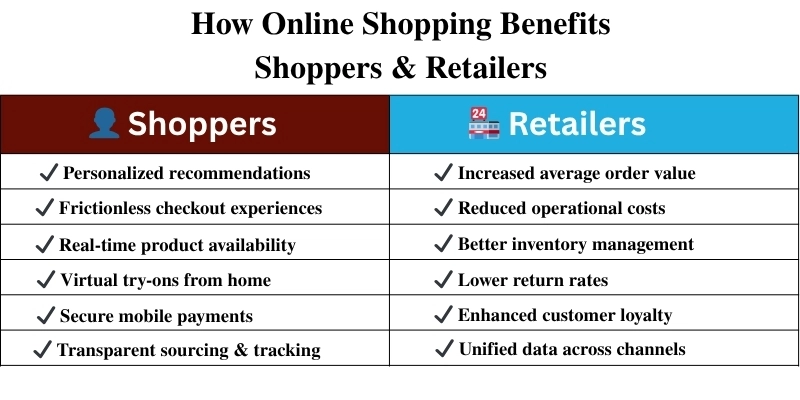
How It Benefits Shoppers & Retailers
Here’s how these innovations add value for both parties in the transaction:
| 👤 Shoppers | ||||||
|---|---|---|---|---|---|---|
|
| 🏪 Retailers | ||||||
|---|---|---|---|---|---|---|
|
Implementing Shopping Technology: A Roadmap
For mid-sized shops, adopting innovation does not imply completing everything at once. A careful, progressive strategy reduces risk while increasing value.
- Audit – Review current tools, identify pain points in the customer journey, and evaluate data infrastructure.
- Pilot – Test one or two high-impact technologies (e.g., AR try-ons or IoT shelf sensors) in select locations.
- Scale – Expand successful pilots across multiple channels or stores.
- Optimize – Gather feedback, refine the user experience, and continually apply AI to improve.
Collaboration with tech partners or innovation labs can help reduce development costs and speed up deployment.
Conclusion
In 2025, shopping technology will be a necessity rather than a luxury. These solutions, which range from AI customization to augmented reality try-ons and new checkout systems, are transforming the shopping experience into something more intelligent and accessible.
Whether you’re a retailer seeking to modernize or a shopper embracing new conveniences, these e-commerce Technology Trends For 2025 will continue to reshape how we buy and sell.
What shopping or retail technology excites (or worries) you the most?
Questions About the technologies for e-Commerce
Here are some FAQs on how technology has improved online shopping and e-commerce.
Online shopping utilizes technologies such as websites, mobile apps, artificial intelligence (AI), and secure payment systems. These tools power features such as product search, recommendation, and tracking.
Technology makes buying products online quicker, simpler, and more personalized. It enables retailers to provide better service and accept secure payments while also helping customers find what they want quickly.
Technology enhances the buying experience by making it more convenient, customized, and economical. It drives everything from product searches and online testing to smartphone payments and home delivery.
Technology is making shopping more efficient and convenient. In the future, AI agents, virtual shops, and tailored offers will save customers time and provide a more engaged experience.
Grocery shopping technology makes shopping easier by providing mobile applications, online ordering, and smart carts. It saves time, shortens waitlists at physical stores, and makes home delivery or pickup incredibly convenient.
Live shopping allows customers to observe product demos and make purchases in real time during a video. It’s entertaining and engaging, allowing buyers to make faster judgments by demonstrating things in action.
The most important eCommerce technologies include AI for personalization, AR for virtual try-ons, secure payment systems, and mobile-friendly platforms.
AI enables eCommerce sites to recommend products, answer queries, and customize your experience. AR allows you to digitally “try on” things such as clothing or furniture, giving you confidence before making a purchase.

- Be Respectful
- Stay Relevant
- Stay Positive
- True Feedback
- Encourage Discussion
- Avoid Spamming
- No Fake News
- Don't Copy-Paste
- No Personal Attacks



- Be Respectful
- Stay Relevant
- Stay Positive
- True Feedback
- Encourage Discussion
- Avoid Spamming
- No Fake News
- Don't Copy-Paste
- No Personal Attacks


